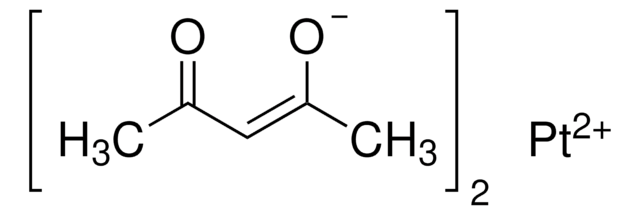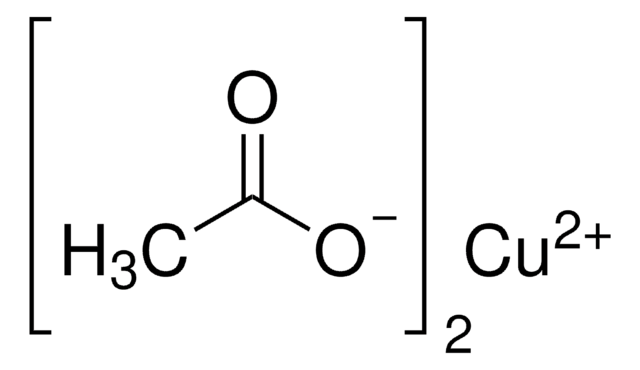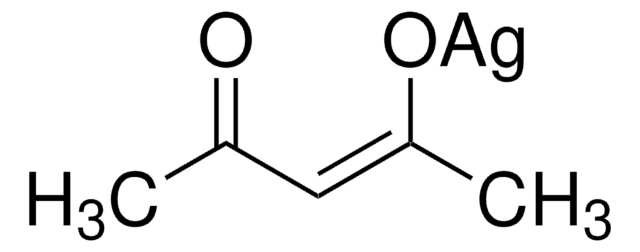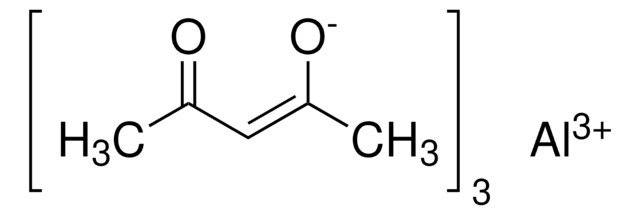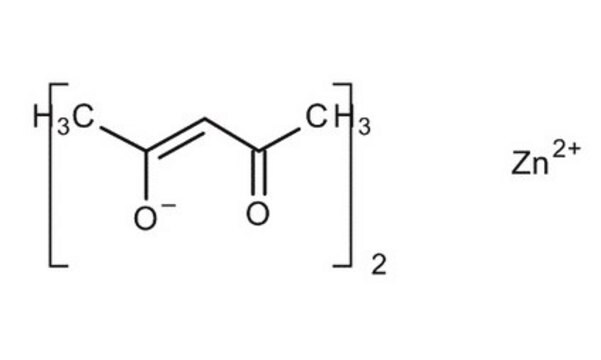514365
Copper(II) acetylacetonate
≥99.9% trace metals basis
Synonyme(s) :
2,4-Pentanedione copper(II) derivative, Bis(2,4-pentanedionato)copper(II), Cu(acac)2, Cupric acetylacetonate
About This Item
Produits recommandés
Niveau de qualité
Pureté
≥99.9% trace metals basis
Forme
powder
Pertinence de la réaction
core: copper
Pf
284-288 °C (dec.) (lit.)
Chaîne SMILES
CC(=O)\C=C(\C)O[Cu]O\C(C)=C/C(C)=O
InChI
1S/2C5H8O2.Cu/c2*1-4(6)3-5(2)7;/h2*3,6H,1-2H3;/q;;+2/p-2/b2*4-3-;
Clé InChI
QYJPSWYYEKYVEJ-FDGPNNRMSA-L
Vous recherchez des produits similaires ? Visite Guide de comparaison des produits
Description générale
Application
- A precursor for atomic layer deposition of copper oxide for all-oxide photovoltaics.
- A catalyst for the aziridination of styrene.
- A catalyst for Huisgen-Click reaction to synthesize 1,2,3-triazoles.
Mention d'avertissement
Warning
Mentions de danger
Conseils de prudence
Classification des risques
Eye Irrit. 2 - Skin Irrit. 2 - STOT SE 3
Organes cibles
Respiratory system
Code de la classe de stockage
11 - Combustible Solids
Classe de danger pour l'eau (WGK)
WGK 3
Point d'éclair (°F)
Not applicable
Point d'éclair (°C)
Not applicable
Équipement de protection individuelle
dust mask type N95 (US), Eyeshields, Gloves
Faites votre choix parmi les versions les plus récentes :
Déjà en possession de ce produit ?
Retrouvez la documentation relative aux produits que vous avez récemment achetés dans la Bibliothèque de documents.
Les clients ont également consulté
Articles
Nanostructured Materials Through Ultrasonic Spray Pyrolysis
Nanostructured Materials Through Ultrasonic Spray Pyrolysis
Notre équipe de scientifiques dispose d'une expérience dans tous les secteurs de la recherche, notamment en sciences de la vie, science des matériaux, synthèse chimique, chromatographie, analyse et dans de nombreux autres domaines..
Contacter notre Service technique





